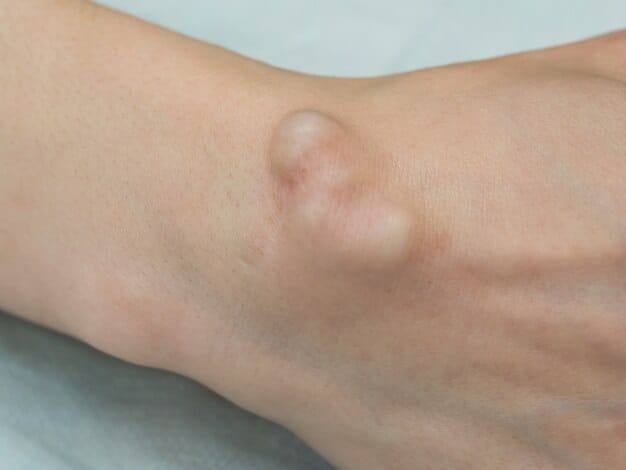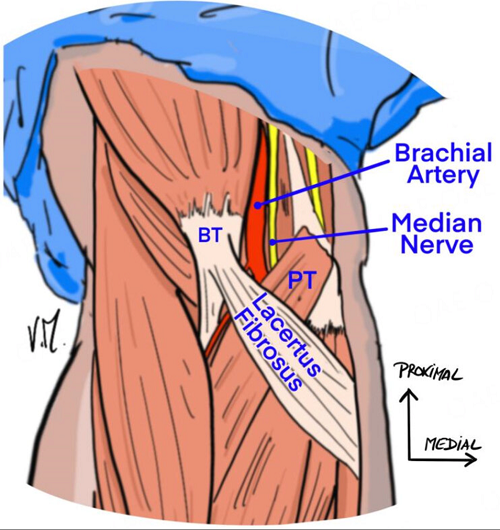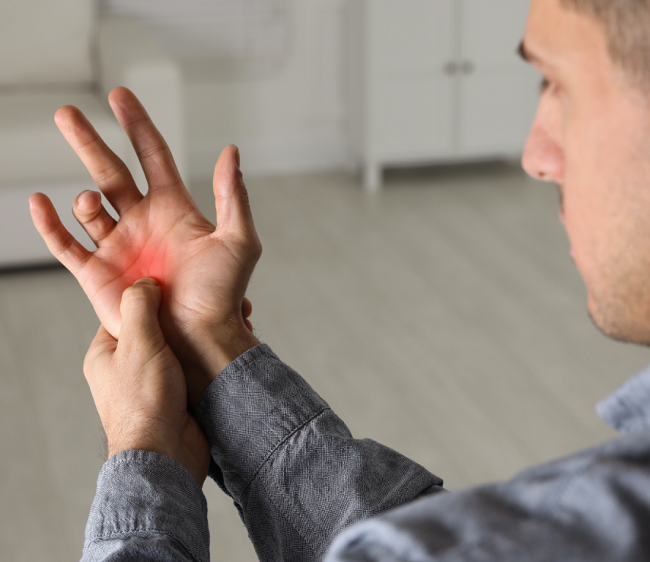
Ganglion Cyst of the Wrist and Hands. Understanding Causes, Symptoms, and Treatment
Discover what a Ganglion Cyst of the Wrist and Hands is, why it forms, and how it can be treated. Learn the symptoms, risk factors, and when to seek medical advice. Dr. Marouane, an award-winning hand-to-shoulder surgeon with over 30 years of experience, shares his expert insights.
Have you ever noticed a small, fluid-filled bump on someone’s wrist or hand? It might seem like a harmless irritation, easy to dismiss or ignore. But what if that bump is a Ganglion Cyst?
Ganglion Cysts on the wrists and hands are common. Often, they go unnoticed or are mistaken for other conditions. Many people don’t realize what they are, how they form, or whether they should be concerned. Dr. Marouane, a leading hand-to-shoulder surgeon in Dubai with over 30 years of experience, offers his expert insights into this often-overlooked condition. Whether worried about a new lump or curious about treatment options, this blog helps in making informed decisions about health.
Understanding Ganglion Cysts
A Ganglion Cyst is a noncancerous, fluid-filled lump formed near joints or tendons. Mostly it happens around the wrist or hand. It can also occur in ankles and feet. These cysts are filled with synovial fluid–lubricating fluid found in joints. It ranges in size from a pea to a golf ball. Typically painless, but can cause discomfort if they press on a nearby nerve.
- Ganglion cysts are common soft tissue tumors of the hand and wrist.
- They affect people of all ages but are most prevalent in young adults.
- Women are more likely to develop ganglion cysts than men.
Why Are Ganglion Cysts Often Ignored?
- Painless: Most ganglion cysts cause no pain, making them easy to overlook.
- Noncancerous: Being benign, they don’t typically raise immediate health concerns.
- Easily Treated: Simple and conservative treatments often lead to delayed medical consultation.
Causes and Risk Factors of Ganglion Cysts
The exact cause of ganglion cysts is not understood, but several factors contribute to their development.
- Joint or Tendon Trauma: Injuries to the wrist or hand
- Arthritis: Certain types of arthritis, such as Rheumatoid Arthritis
- Repetitive Movements: Activities involving repetitive hand and wrist motions, such as typing or certain sports
Symptoms of Ganglion Cysts
Ganglion cysts present with various symptoms:
- Visible Lump: The obvious sign is a soft, round lump, especially on the wrist or hand.
- Pain or Discomfort: If the ganglion cyst presses against a nerve, it causes pain, tingling, or weakness in the affected area.
- Movement Restrictions: Restrict movement if it is near a joint.
Dr. Marouane’s Insights on Treatment Options for Ganglion Cysts
Treatment depends on the severity of symptoms and the impact on daily life. Dr. Marouane shares his insights on the most effective approaches:
- Observation:
- Ganglion cysts are painless and don’t interfere with daily activities. A “watch and wait” approach is recommended as the cyst may resolve on its own.
- Immobilization:
- Wearing a brace or splint limits movement and reduces the cyst’s size by relieving stress on the joint. Helpful if the cyst causes pain with joint movement.
- Aspiration:
- Draining the fluid from the ganglion cyst using a needle helps, but the cyst may return
- Surgery:
- If the cyst causes pain, limits movement, or cosmetic concerns, surgery is needed. Surgery removes the cyst and its root to lower the chance of it coming back.
General treatment
While medical treatments are effective, some general treatment offers temporary relief:
- Over-the-Counter Pain Relief: Nonsteroidal anti-inflammatory drugs (NSAIDs) help alleviate pain and reduce inflammation.
- Warm Compresses: Applying a warm compress to the affected area helps reduce swelling and discomfort.
- Avoiding Aggravating Activities: Limiting activities that stress the affected joint helps prevent the cyst from growing or becoming more painful.
When to See a Doctor
While ganglion cysts are generally harmless, certain symptoms warrant medical attention:
- Pain or Discomfort: If the cyst is causing pain or interfering with your daily activities, it’s important to consult a healthcare professional.
- Rapid Growth: If the cyst is growing rapidly or changing in appearance, seek medical advice.
- Neurological Symptoms: Numbness, tingling, or weakness in your hand or fingers is a sign of an underlying nerve issue and should be evaluated by a doctor.
FAQs About Ganglion Cysts
- Can a ganglion cyst go away on its own?
Yes, especially if it’s small and painless. - Is ganglion cyst surgery risky?
Surgery is generally safe but carries risks like infection, scarring, and recurrence. - Can I prevent a ganglion cyst from forming?
Not entirely, but reducing joint stress may help. - Will my cyst come back after treatment?
There’s a chance it could recur, though surgery lowers this risk. - When should I see a doctor for a ganglion cyst?
If it’s painful, limits movement, or grows quickly, see a doctor.
Conclusion
Ganglion cysts, while often harmless, can cause discomfort and concern due to their appearance and potential symptoms. With the expert insights of Dr. Marouane, a leading orthopedic surgeon in Dubai, explore the best treatment plan tailored to your needs.
. Dr. Marouane Bouloudhnine is a highly skilled hand-to-shoulder surgeon who specializes in treating ganglion cysts and other upper limb conditions. His expertise and compassionate approach provide the relief and support needed.
Remember, you don’t have to live with the discomfort or inconvenience of a ganglion cyst in your Wrist and Hands.
“Your Hand Is Our Priority”–Dr. Marouane Bouloudhnine, expert hand-to-shoulder surgeon.






